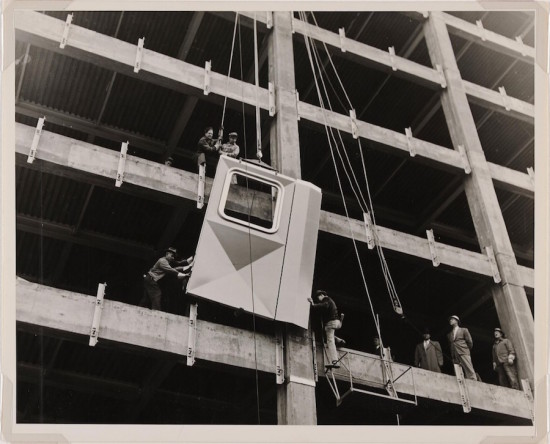
In the 1950s, Pittsburgh was the American poster child for a progressive city. Forward-thinking gentrification projects such as the Gateway Center, a five-building office complex, and Allegheny Center, the former hub of downtown Allegheny City, were part of a transformative frenzy of high-rise constructions during the postwar period.
From September 12, 2015 – May 2, 2016, the Carnegie Museum of Art is hosting an experimental presentation to untangle the evolution of modern architecture and urban planning in Pittsburgh. Titled HAC Lab Pittsburgh: Imagining the Modern, exhibits include archival materials, an active architecture studio, and a salon-style discussion space for urban planners, architects and residents, which collectively unearth layers of history.
The museum’s architects-in-residence, Boston-based studio over,under, highlight the stories of pioneering architecture, disrupted neighborhoods, and the utopian ambitions of public officials and business leaders. Pittsburgh, then a public model for the progressive American city, simultaneously bore the brunt of criticism against postwar gentrification for destroying neighborhoods and displacing communities.
Photos, films, drawings, and other ephemera document this perennial chafing between idealism and public discourse and protest. The exhibition zeros in on landmark projects such as East Liberty, the Lower Hill and Oakland, revisiting the work of influential architects the likes of Harrison & Abramovitz, Mitchell & Ritchey, Simonds & Simonds, and Skidmore, Owings & Merrill (SOM). The exhibition also examines unrealized proposals such as those by Frank Lloyd Wright for the Point, located at the tip of Pittsburgh’s “Golden Triangle.”
Imagining the Modern is the first in a new series of HAC Labs overseen by Raymund Ryan, curator at the Heinz Architectural Center. Each Lab sees a team of design radicals investigate architecture and planning in Pittsburgh from a historical and contemporary perspective to reflect our changing understanding of architecture and urbanism.
In conjunction with the Labs, architecture students at Carnegie Mellon University will investigate the stalled urban revitalization project at Allegheny Center in Fall 2014, examining the sociological, economic and political motivations for urban renewal.